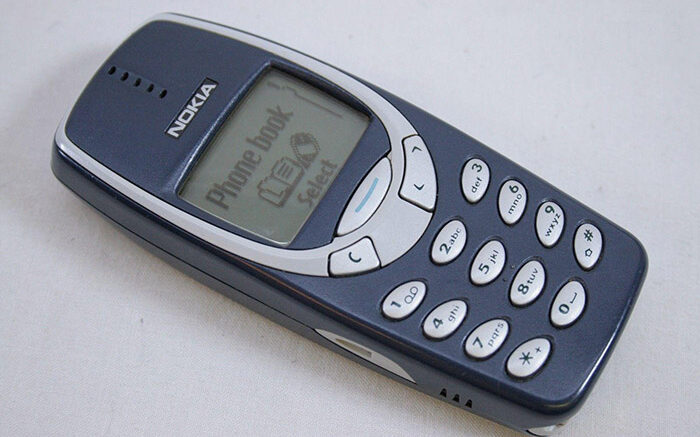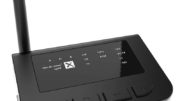I’m one of those people who keeps a box of old power supplies around. I’m fairly sure I have the power supply from my first cell phone, which is older than some of my coworkers. In the days before most devices started getting their power from USB, the world was a pretty scary place if you needed a new power supply for something. If you’re dealing with older tech, it still can be.
The lesson: first thing you need to know
Pretty much every device uses direct current. Pretty much every outlet supplies alternating current. That alone could be the subject of a very long article, but it’s not important that you understand the difference. What you need to understand is that a the whole point of a power supply is to take 110 volts of alternating current from your wall and convert it into the direct current your device needs. The way it does that is through transformers, capacitors, and wires and again I’m not going to go into great detail here. I’m also not going to go into great detail on the difference between volts, amps, and watts, because you could drive yourself crazy from the way some people explain it. Here’s my attempt, if you’re curious.
What you do need to know is that there are three measures of the electrical requirements for your device. If you know two, you can figure out the other one, because they’re all related.
Volts
Generally, your device is going to run on something between 5 and 20 volts. Low voltage travels easily through thin wires, and no one wants a phone charge cable the size of a garden hose, so they use low voltage.
Amps
The amperage requirements for a device can vary greatly. The more powerful a thing is, the more amps it’s going to want to suck. More amps means that the device can get more power when it needs it, either to charge a battery or just to turn on. Amps are always listed as the maximum amount the device needs, but it could use fewer amps depending on what it’s doing.
Watts
Watts are sort of an all-purpose term that gives you a very quick idea of how much power a thing is using. That’s really all you need to know for this article.
How volts, amps, and watts are related
If you know two of those things, you can figure out the other one. Math isn’t everyone’s strong suit, but with a calculator it’s pretty easy.
- To get watts, multiply amps by volts. [W = A x V]
- To get volts, divide watts by amps. [V = W / A]
- To get amps, divide watts by volts. [A = W / V]
This is important because some power supplies only tell you the number of watts. This is especially common in USB power supplies because the number of volts is always 5. So, in other words, if you have a power supply with a USB connector and it only lists watts, just use this formula to figure out the number of amps:
- Divide watts by 5 to get amps. [A = W / 5]
Because the volts are always going to be 5 in a USB power supply.
Understanding the electrical needs of your device
Every device certified for use in the US must list its power needs on the device or on the power supply. Here’s the back of a DIRECTV receiver:

This receiver pulls 120 volts and 55 watts. This means we can also know that it pulls 2.18 amps maximum.
Here’s the back of a laptop power supply:

This power supply is capable of supply 19 volts and 6.32 amps to the laptop. This means we can also say it can supply 120 watts.
Knowing if the power supply you have will work with the thing you want to power
If you’re trying to replace a broken wall wart, don’t throw it away before you replace it. You’ll need to know how many volts and amps it supplies so you can replace it with the right one.
You must replace a power supply with one that supplies the same voltage. If your old wall wart supplies 12 volts, its replacement must also supply 12 volts. Now, you can probably get by with 11 or 13, but really you should aim for a power supply that’s rated for exactly the same voltage as the one you want to replace.
You must replace a power supply with one that supplies at least the same amperage, but it doesn’t have to be exact. If you have a 12 volt, 3 amp power supply and you want to replace it, it’s perfectly fine to replace it with a 12 volt, 20 amp power supply, or any other number of amps as long as it’s at least 3. The device will only use the number of amps it needs.
The hard part: plug shape and polarity
If the power supply you have has a USB-A, MicroUSB, MiniUSB, or USB-C connector, this is the easiest part. But a lot of power supplies don’t. Usually the connector is some sort of round tube and let’s be honest, they all look the same on the internet.
If you’re looking to order a replacement power supply and you can’t test it first, then the next best thing is to go by measurement. Measure the outside of the chrome part in millimeters. If possible, measure the inside hole in millimeters too and note whether there’s a little center pin. You can use this information to match up the power supply you have with the power supply you want.

This is a random image I got on the internet but you can see how the plugs are all showing their outer and inner measurements. All those numbers are millimeters. You won’t find anyone measuring these things in inches.
You can also get a “universal” power supply as long as it supplies the right voltage and enough amperage. At that point you’ll get a bunch of ends that you can try.
The polarity of the tip
In direct current, there is always a positive end and a negative end. The power adapter is supposed to show you which is which using a little diagram. You can see that in the laptop power supply. It’s telling you the negative end is on the outside. You’ll need to get a power adapter that has the positive and negative in the right places. If you get a universal power supply you can usually take the tip off and put it back upside down to switch things. If the tip is permanently attached, you could always cut the wire and re-attach it backwards if you’re into that sort of thing.
If you’re not sure which is positive and which is negative, just try it in the device. If you have things connected wrong, it’s going to be ok for a few seconds. The thing just won’t power on. Try the other polarity and it will most likely work.
Where to find replacement power supplies
This is normally the part where I tell you how great SolidSignal.com is and how we have what you need. If you’re looking for a power supply for something we sell, we’ll have it. It’s worth going to SolidSignal.com and checking it out. But I’ll admit that we don’t have everything. So, get the replacement power supply where you can. Don’t be too afraid of a brand you haven’t heard of. Most replacement power supplies are made in China by companies you’ve never heard of and the company you’ve heard of just puts their label on it.
Just remember the following:
- The volts must always match.
- The amps of the new power supply must be equal to or greater than the ones of the old power supply.
- Use the math to get volts and amps if all they tell you is watts.
- Make sure the tip and polarity match.





